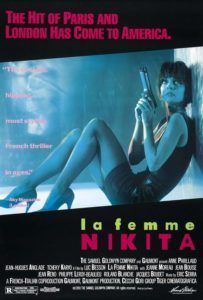From Wayne: We recently did an episode about Kaiju, those huge unstoppable monsters who leave death and destruction in their wake. Around the time of our recording I saw the new Jason Statham movie, The Beekeeper. Spoilers: It’s essentially John Wick. But it sent my brain down the path of making the comparison and thinking of these John Wick-like characters as human kaiju. Okay, they’re not giant monsters, but they do seem to be unstoppable forces of death and destruction, regularly wading unarmed through dozens of opponents. We expect our superhero characters to be powerful and unstoppable, and Batman fits the strictest definition of what I’m going for here, but for what I’m really talking about is more a matter of the strictly human, existing in a non-superhero milieu.
John Wick isn’t the first of these by any means, but he seems to be the modern embodiment of the concept. It feels like there are a lot of these types of characters right now, cut from the cloth of Liam Neeson’s Bryan Mills character from the Taken franchise – a man with a ‟very particular set of skills.” Jack Reacher is this. So is The Equalizer, Jason Bourne, Bob Odenkirk in Nobody. But also John McClane from Die Hard, and Dirty Harry, and pretty much every John Wayne character ever. It’s nothing new, just slicker, more choreographed violence.
And yes, there are female versions of this – la Femme Nikita, The Bride in Kill Bill, The Atomic Blonde – but for the most part this is a masculine trope, which we’ll talk about.
There is a theory called The Thematic Paradigm that underlies my teaching about the superhero, and I know Mav has used this as well, that I think applies here. We have probably referenced it on the show at some point, but I don’t think we’ve done a deep dive. The Thematic Paradigm was articulated by Robert Ray in A Certain Tendency of the Hollywood Cinema, 1930-1980. In his essay, which I won’t go into in specific detail here – gotta save something for the show – Ray outlines a dichotomy and dynamic tension between the types of heroes we are drawn to in our fictions and in real life. He terms these The Official Hero: one who works within the official context of the society and law, and The Outlaw Hero: one who does the right thing but works outside the law, usually as a lone figure following his own moral code of justice.
This dichotomy was also dealt with in The American Monomyth and The Myth of the American Superhero, books by Robert Jewett and John Shelton Lawrence wherein they propose a distinctly American tension between the need to be a part of greater community that makes us stronger (e. pluribus unam), and our strong belief in the ‟pulling yourself up by your own bootstraps,” ‟one good guy with a gun,” rugged individualism.
It’s all a bit more complicated than that, but I think these ‟human kaiju” characters make a great jumping off point to discuss the nature of what we expect and what we enjoy from our human heroic fictions.





Very curious where something like Josh Trank’s Chronicle (2012) would land in this classification!